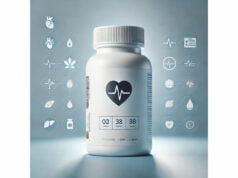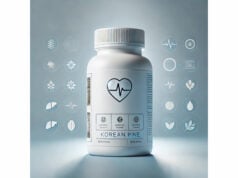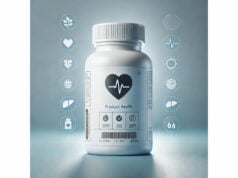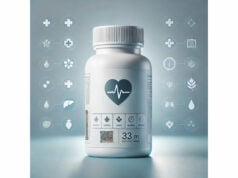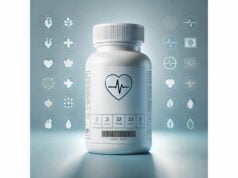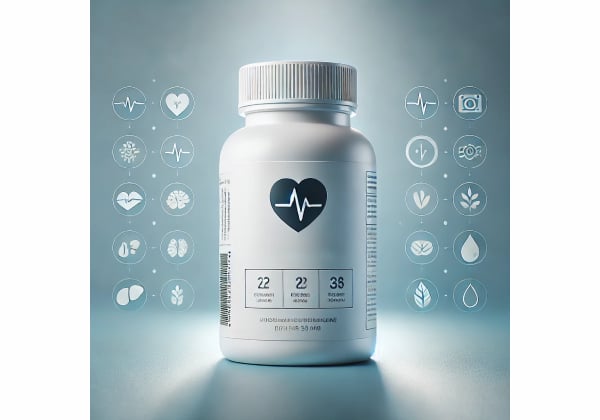
Krill oil has become one of the most discussed omega-3 supplements because it packages EPA and DHA—the same heart-healthy fats in fish oil—inside phospholipids with a natural antioxidant (astaxanthin). Many people reach for krill oil hoping for easier digestion, fewer “fishy burps,” and strong support for triglycerides, joints, brain, and eye health. But not all claims match what good trials show, and product labels can be tricky to compare. This guide takes a people-first, practical view: what krill oil is, what it can realistically do, how to choose and use it, who should avoid it, and what the best evidence says. You will find dose ranges in mg (not just “pills per day”), plain-English explanations of mechanisms, and simple checklists to apply at the store or with your clinician. The goal is to help you decide when krill oil makes sense, what to expect, and how to use it safely and effectively alongside a heart-smart lifestyle.
Quick Overview
- Helps lower triglycerides and supports heart health at adequate EPA+DHA intakes (≈ 250–1,000 mg/day).
- May be gentler on the stomach with fewer fishy burps compared with some fish oils.
- Typical dose delivers 200–600 mg/day EPA+DHA from 1–3 g/day krill oil; check the label for EPA+DHA, not just “oil.”
- Bleeding risk may rise with high omega-3 doses, especially with anticoagulants or antiplatelet medicines.
- Avoid if you have a shellfish allergy, a known allergy to krill products, or you are advised to restrict omega-3s.
Table of Contents
- What krill oil is and how it works
- Proven and potential benefits
- How to use: forms, doses, timing
- What affects results and bioavailability
- Side effects, interactions, and who should avoid
- Evidence snapshot and buyer’s checklist
What krill oil is and how it works
Krill oil is an extract from Antarctic krill (tiny crustaceans). Like fish oil, it supplies the long-chain omega-3 fats eicosapentaenoic acid (EPA) and docosahexaenoic acid (DHA). The main difference is structure: in most krill oils, a significant portion of EPA and DHA is carried on phospholipids rather than triglycerides. Phospholipids are the same building blocks that make up human cell membranes, including those in the heart, brain, and eyes. Krill oil also naturally contains astaxanthin, a reddish carotenoid that helps stabilize the oil against oxidation.
Why this matters:
- Absorption and transport. Phospholipid-bound EPA and DHA integrate readily into micelles during digestion and then into lipoproteins and cell membranes. Some trials suggest similar or modestly higher short-term bioavailability versus traditional fish oil when doses are matched, though findings vary.
- Stability and taste. Astaxanthin acts as an antioxidant, which can improve shelf stability and reduce “fishy” repeat for some people.
- Dose density. Krill oil capsules are typically smaller and contain less total EPA+DHA per pill than many fish oil softgels. That means you often need more capsules to reach the same EPA+DHA target.
Mechanistically, EPA and DHA:
- Lower triglycerides by reducing hepatic very-low-density lipoprotein (VLDL) production and enhancing triglyceride clearance.
- Support cell membrane function by changing membrane fluidity and the balance of eicosanoids and specialized pro-resolving mediators (SPMs) that regulate inflammation.
- Benefit the heart and brain through effects on triglycerides, heart rhythm stability, endothelial function, and neuroprotective pathways.
- Support eye and cognitive health since DHA is a major structural fat in the retina and neuronal membranes.
Key naming: you might see “krill oil,” “krill phospholipids,” “krill omega-3,” or “Antarctic krill extract.” Always look past the brand name to the actual EPA mg and DHA mg per serving. That, not “grams of oil,” guides dosing and expectations.
Practical takeaway: krill oil is a phospholipid-rich omega-3 source with built-in antioxidant protection. Its benefits arise from EPA and DHA—the same molecules used in most fish-oil research—so results depend on how much EPA+DHA you actually consume each day.
Proven and potential benefits
Triglyceride lowering (strongest signal). Across high-quality trials of long-chain omega-3s, consistent triglyceride reductions appear when daily EPA+DHA intake is sufficient. In people with elevated triglycerides, larger intakes produce larger drops. In krill oil-specific studies, reductions of about 10% have been observed in adults with borderline-high or high triglycerides when daily intake was sustained. Clinically, even moderate triglyceride reductions can matter, particularly when combined with diet, weight management, and exercise.
Cardiovascular support. EPA+DHA intakes around 250–1,000 mg/day are widely used to support general heart health, while prescription omega-3 products at 4,000 mg/day (of EPA+DHA or EPA alone) are used under medical supervision for high triglycerides. Krill oil delivers the same bioactive fats; the heart benefits you can expect are linked to achieving these EPA+DHA amounts, not the source itself.
Joint comfort and exercise recovery. Omega-3s can modulate inflammatory signaling and may help with morning stiffness and perceived joint comfort in some people. Early work suggests krill oil may be well tolerated for individuals who do not like large fish-oil softgels, but effects depend on dose and baseline diet (higher EPA+DHA intakes, over weeks, are more likely to be felt).
Brain and eye health. DHA accumulates in neuronal and retinal membranes. Adequate long-chain omega-3 intake during life stages with rapid brain or eye development (for example, pregnancy) is important. For adults, evidence is mixed for cognitive enhancement, but ensuring baseline adequacy is reasonable for long-term health, especially when diet is low in seafood.
Metabolic wellness. Omega-3s can improve certain lipid fractions (especially triglycerides) and support liver fat management in some contexts when combined with diet and activity. Do not expect large LDL-cholesterol changes; LDL may remain the same or shift modestly.
Digestive comfort and “burp factor.” Many users report that krill oil causes fewer fishy aftertastes, likely due to smaller capsule size, phospholipid format, and astaxanthin’s stabilizing effect. If you are sensitive to repeats from fish oil, krill oil is a reasonable alternative to try.
What krill oil is not:
- It is not a substitute for statins, antihypertensives, or diabetes medications.
- It is not a standalone solution for cardiovascular risk. It is a supportive nutrient that works best with a Mediterranean-style eating pattern, exercise, sleep, and weight control.
Expectations:
- Time to effect: triglycerides begin to change within 4–12 weeks of sustained intake.
- Magnitude: larger baseline triglycerides and larger daily EPA+DHA doses generally yield larger improvements.
- Individuality: genetics, baseline diet, and adherence create wide variability; a lipid panel is the best way to gauge response.
How to use: forms, doses, timing
Forms you will see
- Standard krill oil softgels. Phospholipid-rich oil with EPA, DHA, and astaxanthin. Capsule sizes are often smaller than fish oil, but EPA+DHA per softgel is also lower.
- Concentrated krill oil. Some products increase EPA+DHA per capsule; labels differ widely.
- Liquids and combination formulas. Less common; sometimes blended with other lipids or vitamins.
Reading the label
- Find the Supplement Facts panel and locate EPA and DHA in milligrams per serving. Ignore “grams of krill oil” as your dosing guide; focus on mg EPA + mg DHA = total EPA+DHA per day.
- Check astaxanthin content (often 0.25–1.5 mg per serving). It adds antioxidant protection but is not the primary active for triglycerides.
Evidence-aligned dose ranges
- General wellness / diet insurance: 250–500 mg/day EPA+DHA, from any source (often 1–2 g/day krill oil depending on the brand).
- Triglyceride support (non-prescription adjunct): 1,000 mg/day EPA+DHA is a practical ceiling for over-the-counter krill oil; higher “therapeutic” intakes (for example, 4,000 mg/day EPA or EPA+DHA) should be done only with prescription omega-3s and clinician oversight.
- Pregnancy and lactation: ensure at least 250 mg/day DHA+EPA, commonly emphasizing DHA; discuss sources and mercury-safe seafood with your prenatal clinician.
How many capsules is that?
Typical krill oil softgels provide 100–300 mg EPA+DHA per capsule. To reach 500 mg/day, many people need 2–3 capsules daily, depending on brand potency. Always do the math from the label.
Timing and food
- Take krill oil with a meal that contains fat to support absorption.
- Split dosing (morning and evening) can improve tolerance in sensitive stomachs.
- Consistency beats perfection—make it part of a daily routine for 8–12 weeks before reassessing lipids.
Stacking with fish oil
- You can combine krill oil with fish oil if your goal is a specific EPA+DHA total and you tolerate one form better. Keep a running tally of EPA+DHA mg/day across all products.
- Do not exceed clinician-advised limits if you are on anticoagulants or have bleeding risks.
When to consider prescription omega-3s instead
- Triglycerides ≥ 500 mg/dL or a need for 4,000 mg/day EPA or EPA+DHA to target triglycerides. Prescription products deliver standardized doses and are monitored for interactions and lipid responses.
Monitoring
- Recheck a fasting lipid panel around 8–12 weeks after a consistent EPA+DHA intake change.
- Track digestion, reflux, and stool changes; adjust mealtime and split dosing if needed.
What affects results and bioavailability
1) Chemical form and matrix
Krill oil packages EPA and DHA on phospholipids, whereas many fish oils use triglycerides or ethyl esters. In controlled studies:
- Some report similar bioavailability between krill oil and fish oil when EPA+DHA doses are matched.
- Others find modestly higher short-term plasma EPA+DHA after krill oil compared with equal amounts from certain fish-oil forms.
- Overall, the EPA+DHA total you take daily remains the primary driver of long-term tissue levels and clinical effects; formulation is a secondary optimizer.
2) Dose and duration
- Tissue markers (for example, the omega-3 index in red blood cell membranes) rise over weeks to months. Short trials that measure blood fatty acids for only hours to days mainly reflect absorption, not steady-state tissue enrichment.
- For triglyceride changes, plan on 8–12 weeks to see your true personal response.
3) With-meal fat
- Taking krill oil with food (especially with some fat) improves micelle formation and absorption. Taking it on an empty stomach can reduce uptake and increase GI side effects.
4) Genetics and baseline diet
- Individuals vary in how they elongate, desaturate, and distribute fatty acids. People with low seafood intake often show larger rises in EPA+DHA status when they start supplementing.
- A Mediterranean-style pattern (fish, olive oil, nuts, legumes, vegetables) synergizes with omega-3s, improving the overall cardiometabolic picture.
5) Oxidation and freshness
- Oxidized oils taste and smell worse and may irritate the GI tract. Astaxanthin helps protect krill oil, but you should still:
- Choose products with clearly labeled harvest and expiration dates.
- Store in a cool, dark place; some people refrigerate to reduce repeat.
- Avoid products with a strong rancid odor.
6) Product potency and transparency
- Two bottles labeled “krill oil” can differ two- to three-fold in EPA+DHA per capsule. Higher potency reduces capsule count to hit your target dose.
- Look for third-party testing seals and full per-capsule EPA and DHA listings (not just “omega-3s”). Brand transparency is a practical marker of quality.
7) Companions that may help
- Dietary fiber (for example, beta-glucans from oats) and weight loss strategies complement triglyceride lowering.
- Alcohol reduction and added-sugar control have outsized effects on triglycerides; supplements cannot overcome a high-sugar, high-alcohol pattern.
Side effects, interactions, and who should avoid
Most people tolerate krill oil well. The most common issues are mild GI symptoms—burping, reflux, loose stools, or stomach upset—especially when taken without food. Because krill oil capsules are small and stabilized with astaxanthin, many users find it gentler than large fish-oil softgels.
Less common effects
- Skin flushing or rash in sensitive individuals.
- Breath or sweat odor with higher intakes.
- Allergy reactions in those allergic to shellfish or krill products.
Interactions and cautions
- Bleeding risk: high total omega-3 intake can increase bleeding tendency. Use caution if you take warfarin, direct oral anticoagulants, high-dose aspirin, clopidogrel, or herbal agents with antiplatelet effects. Coordinate with your clinician before starting or changing doses.
- Blood pressure and glucose: typically neutral to modestly beneficial effects; monitor if you are adjusting antihypertensives or diabetes medications.
- Lipid-lowering medications: generally compatible; krill oil can complement statin therapy for triglycerides, but do not adjust prescriptions without medical advice.
- Surgery or procedures: clinicians often advise pausing high-dose omega-3s 7–10 days prior to elective procedures; follow your team’s instructions.
Who should avoid or seek medical guidance first
- Shellfish allergy (or prior reaction to krill oil).
- People on anticoagulants or multiple antiplatelet medications.
- Those with bleeding disorders.
- Pregnant or breastfeeding individuals: omega-3s are important, but source choice, dose, and purity should be reviewed with your prenatal clinician; dietary seafood guidance may be preferable.
- Children: use only with pediatric guidance.
How to reduce side effects
- Take with your largest meal.
- Split the dose across the day.
- Start at a lower amount and build up over 1–2 weeks.
- Switch brands or capsule strengths if repeats persist; sometimes potency and capsule shell differences matter.
When to stop and call your clinician
- Allergic symptoms (hives, swelling, wheeze).
- Easy bruising or prolonged bleeding.
- New or worsening reflux that does not respond to dose splitting with meals.
Evidence snapshot and buyer’s checklist
What the clinical evidence says in plain language
- Triglycerides: Long-chain omega-3 fats reliably lower triglycerides; krill oil trials show meaningful reductions when EPA+DHA intake is adequate and sustained. The effect size scales with both baseline triglycerides and dose.
- Heart outcomes: For the general population, omega-3 supplements offer modest or inconsistent effects on major cardiovascular events, with stronger evidence in people at elevated cardiovascular risk. Prescription-strength doses show clear triglyceride lowering and are used clinically for severe hypertriglyceridemia.
- Bioavailability: Head-to-head comparisons find similar or slightly better short-term EPA+DHA appearance in blood after krill oil versus some fish-oil forms. Over months, the total EPA+DHA you take matters most for tissue levels and clinical outcomes.
- Tolerability: Many find krill oil easier to digest, with fewer aftertastes.
Buyer’s checklist (use in the aisle or online)
- EPA+DHA per serving: Aim for ≥ 250–500 mg/day for general support. If the label only lists “krill oil grams,” look elsewhere.
- Capsule count math: If one capsule provides 150 mg EPA+DHA, you will need 2–3 capsules/day to reach 300–450 mg.
- Astaxanthin listed: Typical 0.25–1.5 mg per serving supports stability; more is not necessarily better for triglycerides.
- Third-party testing: Look for recognizable seals and batch traceability.
- Freshness: Check expiration date, avoid rancid odors, and store properly.
- Your meds and conditions: If you use blood thinners or have a shellfish allergy, consult your clinician before purchase.
- Prescription thresholds: If your triglycerides are very high, discuss prescription omega-3 therapy rather than trying to reach multi-gram intakes with over-the-counter products.
A simple starting plan
- If your diet is low in seafood, start with a krill oil providing 300–500 mg/day EPA+DHA, taken with food for 8–12 weeks.
- Recheck lipids and reassess how you feel. If triglyceride support is the goal and your response is modest, discuss either increasing EPA+DHA (by adding or switching products) or moving to prescription-strength therapy if appropriate.
References
- Omega-3 Fatty Acids – Health Professional Fact Sheet 2024 (Guideline/Factsheet)
- Omega-3 Fatty Acids for the Management of Hypertriglyceridemia: A Science Advisory From the American Heart Association 2019 (Guideline)
- Krill oil supplementation lowers serum triglycerides without increasing low-density lipoprotein cholesterol in adults with borderline high or high triglyceride levels 2014 (RCT)
- Comparison of bioavailability of krill oil versus fish oil and other marine oils 2015 (Systematic Review)
- Effectiveness of a Novel ω-3 Krill Oil Agent in Patients With Severe Hypertriglyceridemia 2022 (RCT)
Medical Disclaimer
This article provides general information about krill oil and omega-3 fatty acids. It is not a substitute for professional medical advice, diagnosis, or treatment. Always talk with your qualified health-care provider about your personal health needs, medications, and the suitability of any supplement. Do not ignore or delay seeking professional advice because of something you have read here.
If you found this helpful, consider sharing it with friends or colleagues on Facebook, X (formerly Twitter), or your preferred platform, and follow us for future evidence-based guides. Your support helps us keep creating high-quality health content.

